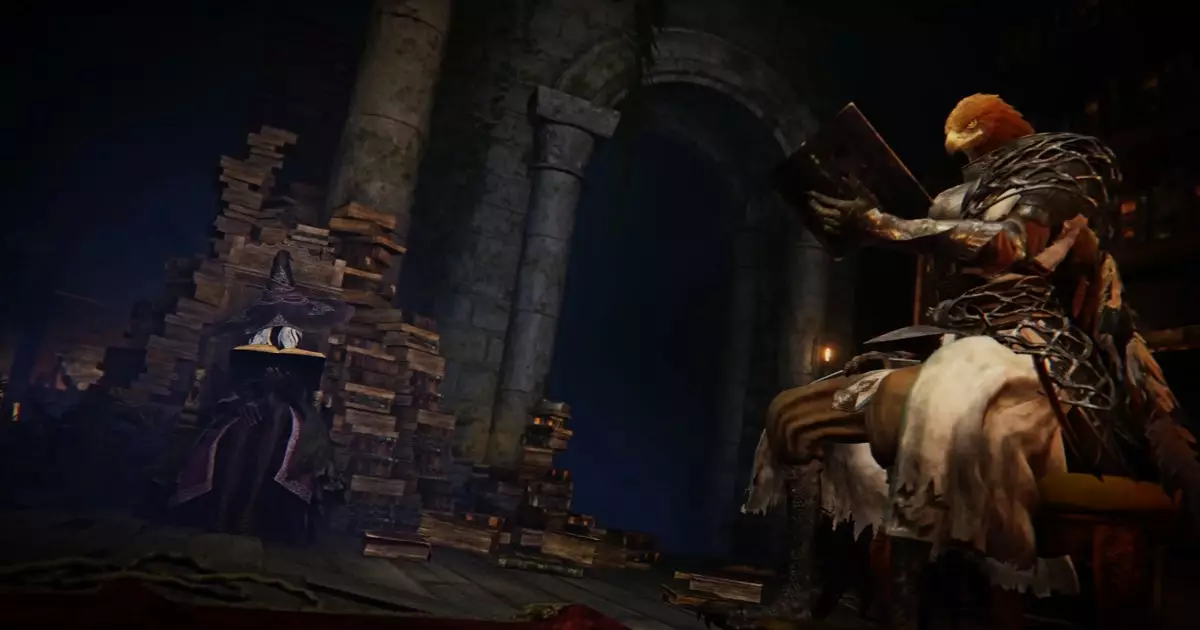In the expansive world of Elden Ring, a gaming phenomenon that has captivated players worldwide, the intricate designs and storytelling have always left enough room for speculation and curiosity. One of the areas of intrigue lies within the newly introduced character, the bird-bodied Guardian of Nightreign. A lingering question that has captivated the community revolves around the possibility of a human face existing within the Guardian’s feathery exterior. This inquiry, however niche, delves deep into the essence of FromSoftware’s meticulous design philosophy, where every detail could harbor deeper meanings, or simply serve as a clever misdirection.
The investigation into this curiosity was propelled by the ever-inquisitive modder and dataminer, Zullie The Witch. Known for their dedication to unearthing hidden intricacies within the Souls series, Zullie’s analysis often reveals layers of complexity that many players overlook. In an engaging video, they scrutinize the Guardian’s model with the same intensity as a detective unraveling a classic whodunit. It’s akin to peeling an onion—each layer uncovers theories and clues, but ultimately, it’s the center that leaves players pondering.
Anatomy of the Nightreign Characters
Understanding the character designs in Nightreign is essential to grasping the full picture. With a shift from the traditional character creator used in Elden Ring to eight established archetypes, the game showcases a unique approach to character development. Zullie elucidates that while facedata is indeed present in Nightreign, it mirrors existing data from Elden Ring rather than offering new character generation options. This shift raises the question: what does this mean for character individuality in the latest installment?
The Guardian, a formidable figure wielding a halberd, stands as an emblem of strength and complexity. Players speculated whether his avian features concealed a human countenance, perhaps as a nod to the broader lore tying all characters together. However, Zullie’s findings quash this theory—there is no human face lurking beneath the surface! This revelation is a double-edged sword; on the one hand, it preserves the Guardian’s mystique, while on the other, it frustrates those who delve deeper into interconnected narratives.
The Mystery of Wylder: A Faceless Enigma
While the Guardian’s lack of hidden facial features satisfied one community curiosity, another enigma emerged: the character Wylder, who has garnered attention for his uncertain appearance. According to Zullie’s detailed dissection, Wylder’s armor removal only results in the unveiling of a featureless silhouette. This creates a contrast with the other characters whose visual elements are much more pronounced. Speculation abounds regarding Wylder’s actual appearance, drawing humorous parallels to popular culture. Players jokingly likened him to the “John” figure seen in other gaming contexts, a legendary everyman archetype who represents the unknown within the gaming community.
This theory touches upon the human fascination with identity and recognition within vast narratives. Why is Wylder’s identity obscured? Is it a reflection of the game’s theme of faceless heroes journeying through adversity, or merely an artistic choice? Such questions can stimulate engaging discussions, reflecting the multidimensional narrative depth that FromSoftware often weaves into their works.
The Community’s Reaction and Speculative Lore
The community’s response to these revelations underscores the importance of collective inquiry in gaming culture. Elden Ring’s lore, much like its gameplay, thrives on speculation. Fans of the game find relish in the unseen and the unconfirmed, often debating the implications of each character’s design and their role in the overarching narrative. Zullie’s work not only satiates curiosity but also amplifies dialogue around the complexities of character creation and the nature of identity in the Forgotten Lands.
As players wade through these thematic waters, it is evident that Elden Ring’s allure isn’t merely in its gameplay or aesthetic; it profoundly lies in its community’s engagement and the discussions it incites. Just as players pick apart the nuances of character designs, they simultaneously forge connections with one another, led by shared curiosity and theories.
In the end, regardless of whether characters like the Guardian and Wylder are faceless or fully rendered, their existence ignites conversation, embodying the notion that much of what makes a game memorable is not only within the game’s confines but also its ability to spark thought and interaction among its players.

